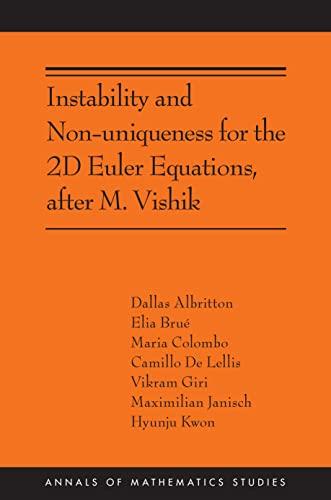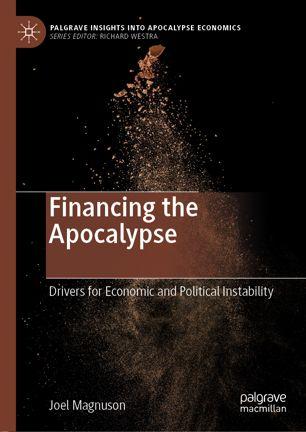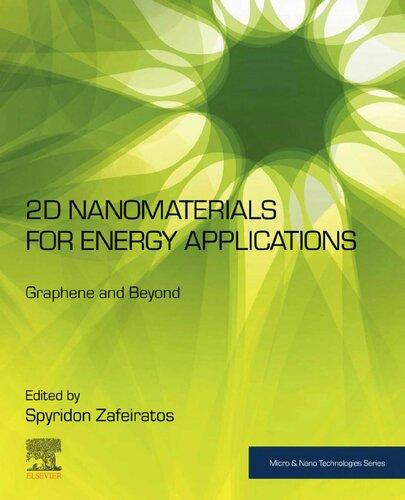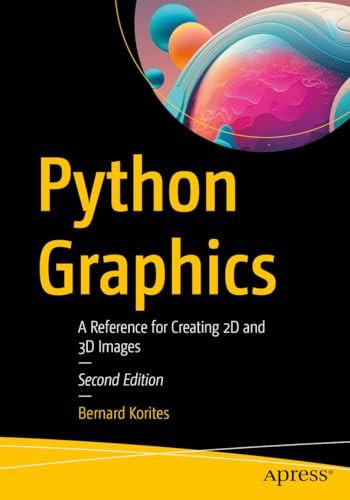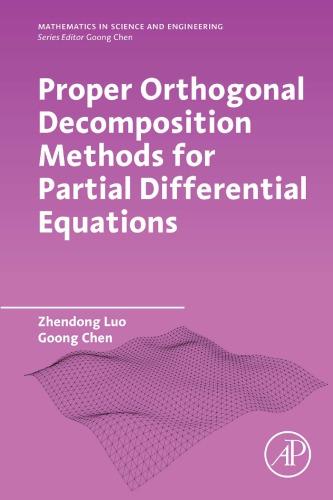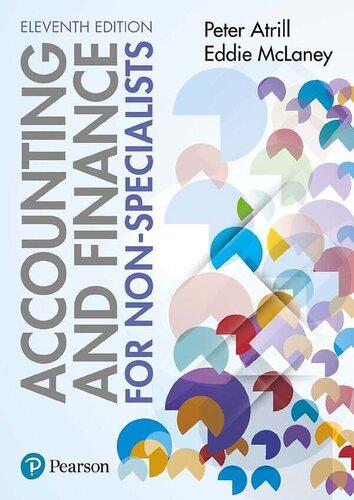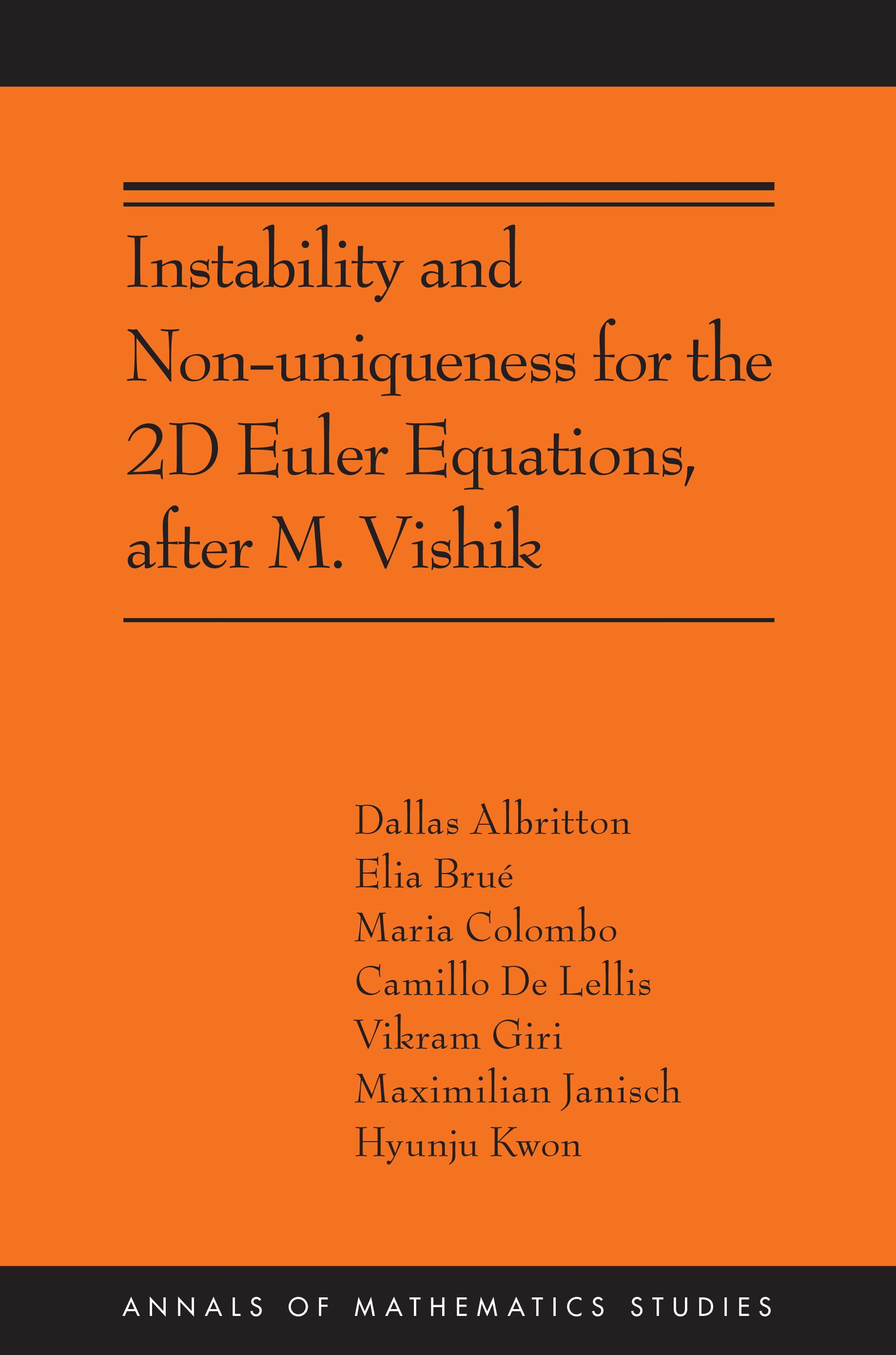AnnalsofMathematicsStudies
Number219
© 2024PrincetonUniversityPress
Requestsforpermissiontoreproducematerialfromthis workshouldbesenttoPermissions,PrincetonUniversityPress
PublishedbyPrincetonUniversityPress, 41WilliamStreet,Princeton,NewJersey08540
IntheUnitedKingdom:PrincetonUniversityPress, 99BanburyRoad,OxfordOX26JX press.princeton.edu
AllRightsReserved
LibraryofCongressControlNumber: 2023941284
ISBN:978-0-691-25752-5
ISBN(pbk):978-0-691-25753-2
BritishLibraryCataloging-in-PublicationDataisavailable
Editorial:DianaGillolyandKiranPandey
ProductionEditorial:KathleenCioffi
Production:LaurenReese
ThisbookhasbeencomposedinLaTeX. Printedonacid-freepaper.
Thepublisherwouldliketoacknowledgetheauthorsofthisvolumeforacting asthecompositorforthisbook.
PrintedintheUnitedStatesofAmerica
1Generalstrategy:Backgroundfieldandself-similar coordinates11
1.1Theinitialvelocityandtheforce..................11 1.2Theinfinitelymanysolutions....................16
2Lineartheory:PartI27
2.1Preliminaries.............................29
2.2ProofofTheorem2.4andproofofTheorem2.1(a)........32
2.3ProofofTheorem1.10:preliminarylemmas............34
2.4ProofofTheorem1.10:conclusion.................38
3Lineartheory:PartII41 3.1Preliminaries.............................42 3.2Theeigenvalueequationandtheclass
3.7ProofofProposition3.15:PartI..................69
3.8ProofofProposition3.15:PartII..................73
3.9ProofofProposition3.17......................80
3.10ProofofLemma3.19.........................82
4Nonlineartheory87 4.1ProofofProposition4.2.......................89
4.2ProofofLemma4.3.........................92
4.3Proofofthebaseline L2 estimate..................97
4.4Estimatesonthefirstderivative...................99
AppendixA
A.1FromRemark3.3(i)toRemark2.2(c)...............105
A.2ProofofRemark3.3(i)........................105
A.3ProofofTheorem3.4.........................111
A.4ProofofPropositionA.4.......................112
AppendixB
B.1ProofofRemark0.2.........................121
B.2ProofofTheorem0.3.........................121
B.3ProofofProposition1.5.......................123
B.4ProofofLemma1.9.........................127
Preface
Theincompressible EulerequationsareasystemofpartialdifferentialequationsintroducedbyEulermorethan250yearsagotodescribethemotionofan inviscidincompressiblefluid.Assumingthatthemotiontakesplaceinacertain spatialdomainΩ ⊂ R3 andduringanintervaloftime I,theunknownsaregiven byavectorfield v :Ω × I → R3 andascalarfield p :Ω × I → R.Thefield v (the velocity ofthefluid)iseasytodescribeinphysicalterms:thevector v(x,t) givesthespeedofthefluidparticlewhichattime t occupiesthepoint x ∈ Ω. Thehydrodynamicpressure p hasalessintuitivedescription.IfΓ ⊂ Ωisafluid element,e.g.,asmoothboundedregioninthespace,and n denotestheexterior normaltoit,then
istheforceexertedbytherestofthefluidontheportionwhichoccupiesthe regionΓattime t,assumingthatthereisnoexternalforce.
ThesystemofequationswrittenbyEulertakestheform
where(atleastforsmoothsolutions)theadvectivetermdiv(v ⊗ v)canbe equivalentlywrittenas(v ·∇)v.Thedivergence-freeconditionisaconsequence oftheincompressibilityconstraint,anditexpressesthelawofconservation ofmassforthefluid.Thefirst,vectorial,equationisadirectconsequenceof Newton’ssecondlaw,anditencodestheconservationofmomentum.Thevector field F ,whichwithoutlossofgeneralitycanbeassumedtobedivergence-free, describesa(known)externalforceactingonthefluid.
Inordertodeterminethemotion,theequationsmustbecomplementedwith someboundaryconditions.Atypicalassumptionisthatthevelocityofthefluid isknownatsomegiventime T0 ∈ I (whichwithoutlossofgeneralitywecan assumetobe0)andthatthefluidistangentto ∂Ωduringtheevolution.Because oftheincompressibility,thelatterconditionisequivalenttoassumingthatthere isno“leak,”i.e.thatnoportionofthefluidleavestheregionΩ.
OnecommonidealizedassumptionisthatΩisthewholethree-dimensional spaceandthatthevelocitydecayssuitablyatspatialinfinity.Thisisalsoone basicassumptionofthepresentbook.Wearethuslefttoconsidersolutionsof
(0.1)on R3 × I subjecttoaninitialconditionoftype v( , 0)= v0,whichinthe literatureiscalledthe Cauchyproblem
Itisknownthat,iftheinitialvelocityandtheforcearesufficientlysmooth anddecaysufficientlyfastatspatialinfinity,acorrespondinglysmoothand decayingsolutionoftheCauchyproblemexistsforafinitetimeanditisunique amongsolutionswiththesameregularityanddecayassumptions(infact,these assumptionscanbeconsiderablyweakened,butitalsoknownthatamongvery roughsolutionstheuniquenesspropertyislost).Theproblemofwhetherthis existencetimecanbeprolongedindefinitely,i.e.,whetherthereisaregular solutionwhichblowsupinfinitetime,isoneofthemostimportantproblems intheoreticalfluiddynamics,anditisstilllargelyopen.
Whenthethirdcomponentofthevelocityvanishesandtheremainingunknownsareindependentofthethirdspatialvariable,theequationsreducetoa systemwithexactlythesameformon R2 × I.Inthiscase(andforsomesufficientlysmoothsolutions)thesystemcanbesubstantiallysimplifiedthrough theintroductionofthe vorticity,namely,thescalar
Thevorticityisconstantalongtheparticletrajectoriesofthefluid;namely,it solvesthetransportequation
for f = ∇× F .Ontheotherhand,duetotheassumptionthat v decaysat infinity, ω determines v throughthesingularintegraloperator
where x⊥ =( x2,x1).Inparticular,wearriveataCauchyproblemforan integro-differentialsystemintheunknown ω
Inthiscase,forsufficientlysmooth(anddecaying)initialdataandforce, thereisauniquesmoothsolution foralltimes.Infact,acelebratedresultof Yudovichshowsthatthefollowingassumptionsaresufficienttobuildawellposednesstheory:
• ω0 isbounded,
• K2 ∗ ω0 issquaresummable,
• ∥f (·,t)∥L∞ dt< ∞,and
• ∥K2 ∗ f (·,t)∥L2 dt< ∞.
Inthespecificcase f =0,Yudovichprovedtheexistenceofasolutionwhich enjoysuniformbounds(intime)onthe L∞ normofthevorticityandonthe L2 normofthevelocity K2 ∗ ω.Crucially,healsoshowedthatthereisaunique
solutionwiththelatterproperties.Theproofisreadilyadaptedtoaccommodate nonzero f satisfyingtheaboveassumptions:theinterestedreadercanfindthe detailsinAppendixB.2.
Awell-knownproblemiswhethertheabovewell-posednesstheoremholds when L∞ isreplacedby Lp forsome p< ∞.Indeed,whileitisnotdifficult toconstructsolutionswhichenjoycorrespondingboundsinthegeneral Lp , theiruniquenesswasanopenquestionuntilveryrecently.Thisquestionwas resolvedin2018intworemarkableworksbyM.Vishik,whoshowedthatthe answerisnegative.Thisbookistheresultofareadingseminarthattheauthors organizedattheInstituteforAdvancedStudyduringtheacademicyear2020–21.ItexplainsindetailVishik’sresultandgivesaself-containedproof.It followsVishik’soriginalstrategyandinmanyplacesitisjustareelaboration ofhisarguments,butitalsoproposessomealternativeapproachestosome importantsteps.WehopethatourpresentationwillmakeVishik’sworkmore readilyaccessibletothebroaderPDEcommunity.
Finally,wepointoutthatanexpandedversionofthesenotesiscontained inthemaster’sthesisofthesixthauthor;cf.[21].
DallasAlbritton EliaBru´e MariaColombo CamilloDeLellis VikramGiri MaximilianJanisch HyunjuKwon
Lausanne,Princeton,andZ¨urich October18,2022
Acknowledgments
D.A.wassupportedbyNSFPostdoctoralFellowshipGrantNo.2002023and SimonsFoundationGrantNo.816048.E.B.wassupportedbytheGiorgioand ElenaPetronioFellowship.M.C.wassupportedbytheSNSFGrant182565and bytheSwissStateSecretariatforEducationResearchandInnovation(SERI) undercontractnumberM822.00034.C.D.L.wassupportedbytheNSFunder GrantNo.DMS-1946175.V.G.wassupportedbytheNSFunderGrantNo. DMS-FRG-1854344.H.K.wassupportedbytheNSFunderGrantNo.DMS1926686.D.A.wasaffiliatedwiththeCourantInstituteatNewYorkUniversity, theInstituteforAdvancedStudy(IAS),andPrincetonUniversity.E.B.was affiliatedwiththeIAS.M.C.wasaffiliatedwith ´ EcolePolytechniqueF´ed´eralde Lausanne(EPFL).C.D.L.wasaffiliatedwiththeIASandPrincetonUniversity. V.G.wasaffiliatedwithPrincetonUniversity.M.J.wasaffiliatedwiththe UniversityofZ¨urich.H.K.wasaffiliatedwiththeIASandETHZ¨urich. Thematerialofthisbookstemsfromasemester-longreadingseminarorganizedattheInstituteforAdvancedStudy.Theauthorsaregratefultothe staffoftheSchoolofMathematicsandinparticulartoDarioMastroianniand SamVenanzi,whorantheMediaTechnologyServicesoftheInstituteallalone duringtheverystressfultimesoftheCovid-19pandemic.
Introduction
Inthese noteswewillconsidertheEulerequationsinthetwo-dimensional spaceinvorticityformulation,whicharegivenby
where K2 istheusualtwo-dimensionalBiot-Savartkerneland f isagivenexternalvorticitysource,whichweoftencalltheforce. v isthevelocityfield, anditisafunctiondefinedonaspace-timedomainoftype R2 × [0,T ].Bythe Biot-Savartlawwehave ω =curl v = ∂x2 v1 ∂x1 v2 = ∇× v. WewillstudytheCauchyproblemfor(0.2)withinitialdata
onthedomain R2 × [0, ∞[undertheassumptionsthat
(iii) f ∈ L1([0,T ],L1 ∩ Lp)and K2
f ∈ L1([0,T ],L2)forevery T< ∞
Inparticular,weunderstandsolutions ω intheusualsenseofdistributions, namely,
R2 [ω(∂tϕ + K2 ∗ ω ·∇ϕ)+
foreverysmoothtestfunction ϕ ∈ C∞ c (R2 × [0,T [).Inviewof(i)–(ii)and standardenergyestimates,wewillrestrictourattentiontoweaksolutionswhich satisfythefollowingbounds: (a) ω ∈ L∞([0,T ],L1 ∩ Lp)and v ∈ L∞([0,T ],L2)forevery T< ∞
Thepurposeofthesenotesistogiveaproofofthefollowing:
Theorem0.1. Forevery p ∈ ]2, ∞[ thereisatriple ω0,v0,and f satisfying (i)–(ii)withthepropertythatthereareuncountablymanysolutions (ω,v) of (0.2) and (0.3) on R2 × [0, ∞[ whichsatisfythebound(a).Moreover, ω0 canbe
chosentovanishidentically.
Infact,the f givenbytheproofissmoothandcompactlysupportedon anyclosedintervaloftime[ε,T ] ⊂ ]0, ∞[.Moreover,acloserinspectionofthe argumentrevealsthatallofthesolutions(ω,v)enjoyboundsonthe W 1,4 loc norm of ω(t, ·)andgooddecaypropertiesatinfinity,whenever t ispositive(obviously suchestimatesdegenerateas t ↓ 0).Inparticular, v belongsto C 1 loc(R2×]0, ∞[). Itisnotdifficulttomodifytheargumentsdetailedinthesenotestoproduce exampleswhichhaveevenmoreregularityandbetterdecayforpositivetimes, butwedonotpursuetheissuehere.
Remark0.2. Recallthat
whenever p> 2(cf.theappendixfortheproof).Thereforeweconcludethat eachsolution v inTheorem0.1isboundedon R2 × [0,T ]foreverypositive T .
TheabovegroundbreakingresultwasprovedbyVishikinthetwopapers [40]and[41](uponwhichthesenotesareheavilybased)andanswersalongstandingopenquestioninthePDEtheoryoftheincompressibleEulerequations, asitshowsthatitisimpossibletoextendtothe Lp scalethefollowingclassical uniquenessresultofYudovich.
Theorem0.3. Considerastrictlypositive T ,aninitialvorticity ω0 ∈ L1 ∩ L∞ with v0 = K2 ∗ ω0 ∈ L2,andanexternalforce f ∈ L1([0,T ]; L1 ∩ L∞) with K2 ∗ f ∈ L1([0,T ]; L2).Thenthereisauniquesolution ω of (0.2) and (0.3) on R2 × [0,T ] satisfyingtheestimates ω ∈ L∞([0,T ],L1 ∩ L∞) and v = K2 ∗ ω ∈ L∞([0,T ],L2).
TheabovetheoreminaboundeddomainwasoriginallyprovenbyYudovich in1963[44],whoalsoprovedasomewhatmoretechnicalstatementonunboundeddomains.Wehavenotbeenabletofindanexactreferenceforthe statementabove(cf.,forinstance,[30,Theorem8.2]andtheparagraphright afterwards,wheretheauthorspointoutthevalidityofthetheoreminthecaseof f =0).Wethereforegiveadetailedproofintheappendixforthereader’sconvenience.When f =0,Theorem0.3hasbeenextendedtotheYudovichspace offunctionswhose Lp normsareallowedtogrowmoderatelyas p → +∞ [45] andtoborderlineBesovspacescontainingBMO[39].
Remark0.4. WerecallthatthesolutionofTheorem0.3satisfiesasetofimportantaprioriestimates,whichcanbejustifiedusingtheuniquenesspartanda simpleapproximationprocedure.Indeed,if(ω,v)isasmoothsolutionof(0.2), thenthemethodofcharacteristicsshowsthat,forevery t,thereexistsafamily ofvolume-preservingdiffeomorphisms Ts : R2 → R2,s ∈ [0,t],suchthat ω(x,t)= ω0(T0x)+
f (Tsx,s)ds.
Therefore,sincevolume-preservingdiffeomorphismspreserveall Lq norms,we get,forall q ∈ [1, ∞],
Furthermore,ausualintegrationbypartsargument,asseenin[44,Lemma1.1], showsthat v satisfiestheestimate
Remark0.5. RecallthattheBiot-Savartkernelisgivenbytheformula
Inparticular,while K2 ̸∈ Lp forany p,itcanbeeasilybrokeninto
where B1 denotestheunitballaround0.Observethat K21B1 ∈ Lq forevery q ∈ [1, 2[and K21Bc 1 ∈ Lr forevery r ∈ ]2, ∞].Undertheassumptionthat ω ∈ L2 δ forsomepositive δ> 0,thisdecompositionallowsustodefinethe convolution K2 ∗ ω as(K21B1 ) ∗ ω +(K21Bc 1 ) ∗ ω,whereeachseparatesummand makessenseasaLebesgueintegralthankstoYoung’sconvolutioninequality.1 Ontheotherhand,wecautionthereaderthat,forgeneral ω ∈ L2 , K2 ∗ ω maynotbewelldefined.Moreprecisely,ifwedenoteby S theSchwartzspace ofrapidlydecayingsmoothfunctionsandby S ′ thespaceoftempereddistributions(endowed,respectively,withtheirclassicalFr´echetandweaktopologies),itcanbeshownthatthereisnocontinuousextensionoftheoperator S ∋ ω → K2 ∗ ω ∈ S ′ toacontinuousoperatorfrom L2 to S ′;cf.RemarkB.8. Thisfactcreatessometechnicalissuesinmanyargumentswherewewill indeedneedtoconsiderasuitablecontinuousextensionoftheoperator ω → K2 ∗ ω to some closedlinearsubspaceof L2,namely, m-foldrotationallysymmetric functionsin L2 (forsomeinteger m ≥ 2).Suchanextensionwillbeshownto existthankstosomespecialstructuralpropertiesofthesubspace.
1 Young’sconvolutioninequalitystatesthat,if
≤ 2,then g1 (y )g2 ( )belongsto L1 fora.e. y and g1 ∗
0.1IDEAOFTHEPROOF
Wenowdescribe,briefly,theroughideaofandmotivationfortheproof.An extensivedescriptionoftheproofwithprecisestatementscanbefoundinChapter1,whichbreaksdownthewholeargumentintothreeseparate(andindependent)parts.Thesubsequentthreechaptersarethendedicatedtothedetailed proofs.
First,werecalltwoessentialfeaturesofthetwo-dimensionalEulerequations:
1. Steadystates.Thetwo-dimensionalEulerequationspossessalargeclassof explicit,radiallysymmetricsteadystatescalled vortices:
2. Scalingsymmetry.TheEulerequationspossessatwo-parameterscalingsymmetry:If(ω,v)isasolutionof(0.2)withvorticityforcing f ,and λ,µ> 0, then
defineasolutionwithvorticityforcing
Thescalingsymmetrycorrespondstothephysicaldimensions
x]= L, [t]= T, [v]= L T , [ω]= 1 T , and[f ]= 1 T 2 . (0.11)
Wenowelaborateontheabovetwofeatures:
1.Unstablevortices.Thestabilityanalysisofshearflows u =(b(y), 0) andvortices(0.8)isclassical,withseminalcontributionsduetoRayleigh[33], Kelvin[37],Orr[32],andmanyothers.ThelinearizedEulerequationsaround thebackgroundvortex¯ ω are
Considertheeigenvalueproblemassociatedtothelinearizedoperator Lst.It sufficestoconsider ψ = eimθψm(|x|), m ≥ 0,thestreamfunctionassociated toavorticityperturbation ω (thatis,∆ψ = ω).Itisconvenienttopassto anexponentialvariable s =log r anddefine ϕ(s)= ψm(es); A(s)= esg′(es) (r × theradialderivativeofthebackgroundvorticity);andΞ(s)= ζ(es)(the differentialrotation).Theeigenvalueproblemfor Lst,witheigenvalue λ = imz,canberewrittenas (Ξ(s) z) d2 ds2 m 2 ϕ A(s)ϕ =0 (0.13)
Thisis Rayleigh’sstabilityequation.Theeigenvalue λ isunstablewhenIm(z) > 0,inwhichcasewecandividebyΞ z andanalyzeasteadySchr¨odinger equation.Itispossibletounderstand(0.13)wellenoughtodesignvorticesfor whichthecorrespondinglinearoperatorhasanunstableeigenfunction.The unstablemodesarefoundtobebifurcatingfromneutralmodes.Forshear flows,thisanalysisgoesbacktoTollmien[38],whocalculatedthenecessary relationshipbetween z and m forsuchabifurcationcurvetoexist.Theproblem wastreatedrigorouslybyZ.Lin[26]forshearflowsinaboundedchanneland R2 androtatingflowsinanannulus.Werecognizealsotheimportantwork ofFaddeev[14].Thoseinterestedinhydrodynamicstabilitymoregenerallycan consulttheclassicmonograph[10].Chapter4inthelatterreferenceconcernsthe stabilityofshearflows,includingRayleigh’scriterionandasketchofTollmien’s idea.See,additionally,[25]and[35,Chapter2].
Thecaseofvorticeson R2,whichisthecrucialoneforthepurposesofthese notes,wastreatedbyVishikin[41];seeChapter3below.Inthecasesrelevant tothesenotes, Lst hasatleastoneunstableeigenvalue λ.Whilethelattercould wellbereal,forthesakeofourargumentletusassumethatitisacomplex number λ = a0 + b0i (a0,b0 > 0)andlet λ = a0 b0i beitscomplexconjugate. Ifwedenoteby η and¯ η twocorresponding(nontrivial)eigenfunctions,itcanbe checkedthattheyare not radiallysymmetric.
Withtheunstablemodesinhand,onemayseekatrajectoryonthe unstable manifold associatedto λ and λ.Forexample,onesuchtrajectorymaylooklike
where ωlin =Re(eλtη)isasolutionofthelinearizedEulerequations(0.12). Thesesolutionsconvergeto¯ ω exponentiallyinbackwardtime.Hence,weexpect thatcertainunstablevorticesexhibitakindof non-uniquenessattime t = −∞ andmoreoverbreaktheradialsymmetry.Theexistenceofunstablemanifolds associatedtoageneralclassofEulerflowsindimension n ≥ 2wasdemonstrated byLinandZeng[28,29].Thereisasubstantialmathematicalliteratureonthe nonlinearinstabilityofEulerflows;see[16,15,17,4,43,27].
2.Self-similarsolutions.Itisnaturaltoconsidersolutionsinvariantunder thescalingsymmetryand,inparticular,thoseself-similarsolutionswhichlive exactlyatthedesiredintegrability.Ifwefixarelationship Lα ∼ T inthescaling symmetries,thesimilarityvariablesare
Wemayregardthelogarithmictimeas τ =log(t/t0),sothat t isnondimensionalizedaccordingtoafixedreferencetime t0 =1.Noticethatphysicaltime t =0correspondstologarithmictime τ = −∞.ThefunctionΩisknownasthe
profile.TheEulerequations,withoutforce,insimilarityvariablesare
ProfilesΩsatisfying ∥Ω(·,τ )∥Lp = O(1)as τ →−∞ satisfy
(·,t)
L
= O(t 1+ 2 αp )as t → 0+,andsimilarlyintheweak Lp norms.Hence,theLebesgue andweakLebesguenormswith p =2/α wouldbe O(1)ineithervariable.To showsharpnessoftheYudovichclass,weconsider0 <α ≪ 1.
Theroutetonon-uniquenessthroughunstablevorticesandself-similarsolutionsisasfollows:supposethat Ωisanunstablesteadystateofthesimilarity variableEulerequations(0.17)(inparticular,¯ω(x,t)= t 1Ω(ξ)isaself-similar solutionoftheusualEulerequations).FindatrajectoryΩontheunstable manifoldassociatedto Ω.Insimilarityvariables,thesteadystate Ωwillbe “non-uniqueatminusinfinity,”whichcorrespondstonon-uniquenessattime t =0inthephysicalvariables.
Onenaturalclassofbackgroundprofiles Ωconsistsof power-lawvortices ω = β|x| α , β ∈ R,whicharesimultaneouslysteadysolutionsandself-similar solutionswithoutforce.Atpresent,wedonotknowwhethertheabovestrategy canbeimplementedwithpower-lawvortices.
Instead,wechooseasmoothvortexprofile g(|x|),withpower-lawdecayas |x|→ +∞,whichisunstablefortheEulerdynamics.Ourbackgroundwillbethe self-similarsolutionwithprofile Ω= g(|ξ|),whichsolvestheEulerequations with aself-similarforce.Thisprofilemaybeconsideredawell-designedsmoothing ofapower-lawvortex.Whenthebackgroundislarge,itisreasonabletoexpect thattheadditionalterminthesimilarityvariableEulerequations(0.17)can betreatedperturbatively,sothat g(|ξ|)willalsobeunstableforthesimilarity variableEulerdynamics.ThisheuristicisjustifiedinChapter2.
Inordertoensurethatthesolutionshavefiniteenergy,wealsotruncate thebackgroundvelocityatdistance O(1)inphysicalspace.Thisgenerates adifferentforce.Thetruncation’scontributiontotheforceissmoothand heuristicallydoesnotdestroythenon-uniqueness,whichcanbethoughtofas “emerging”fromthesingularityatthespace-timeorigin.OurpreciseAnsatz is(1.38),whichistheheartofthenonlinearpartofthesenotes.
0.2DIFFERENCESWITHVISHIK’SWORK
WhilewefollowthestrategyofVishikin[40,41],wedeviatefromhisproofin someways.Westartbylistingtwochangeswhich,althoughratherminor,affect thepresentationsubstantially.
1. Wedecoupletheparameter α in(0.15)governingtheself-similarscaling fromthedecayrate¯ α ofthesmoothprofile g atinfinity.In[40]thesetwo parametersareequal;however,itisratherobviousthattheargumentgoes throughaslongas α ≤ α.Ifwethenchoose α< α,theresultingsolutionhas zeroinitialdata.Thisisaveryminorremark,butitshowcasestheprimary roleplayedbytheforcing f intheequation.
2. StrictlyspeakingVishik’sAnsatzforthe“backgroundsolution”isinfact differentfromourAnsatz(eventakingintoaccountthetruncationatinfinity).Theinterestedreadermightcompare(1.9)and(1.11)with[40,(6.3)]. Noteinparticularthatthecoordinatesusedin[40]arenotreally(0.15)but, rather,amorecomplicatedvariant.Moreover,Vishik’sAnsatzcontainsaparameter ε,whosepreciseroleisperhapsnotinitiallytransparent,andwhich isultimatelyscaledawayin[40,Chapter9].Thisobscuresthefactthatthe wholeapproachhingesonfindingasolutionΩofatruncatedversionof(0.17) asymptotictotheunstablemanifoldofthesteadystate Ωat −∞.Inour case,Ωisconstructedbysolvingappropriateinitialvalueproblemsforthe truncatedversionof(0.17)atnegativetimes k andthentakingtheirlimit; thisplaystheroleofVishik’sparameter ε
Wenextlisttwomorewaysinwhichournotesdeviatefrom[40,41].These differencesaremuchmoresubstantial.
3. ThecrucialnonlinearestimateintheproofofTheorem0.1(cf.(1.18)andthe morerefinedversion(1.25)),whichshowsthatthesolutionΩisasymptotic, at −∞,toanunstablesolutionofthelinearizedequation,isprovedina ratherdifferentway.Inparticular,ourargumentiscompletelyEulerianand basedonenergyestimates,whileaportionofVishik’sproofreliesinacrucial wayontheLagrangianformulationoftheequation.Theapproachintroduced hereisexploitedbythefirstandthirdauthorin[1],andwebelieveitmight beusefulinothercontexts.
4. Anothertechnical,butcrucial,difference,concernsthesimplicityoftheunstableeigenvalue η.WhileVishikclaimssuchsimplicityin[41],theargument giveninthelatterreferenceisactuallyincomplete.Afterwepointedoutthe gaptohim,heprovidedacleverwaytofillitin[42].Thesenotespointout thatsuchsimplicityisnotreallyneededinthenonlinearpartoftheanalysis: infact,amuchweakerlinearanalysisthanthecompleteonecarriedoutin [41]isenoughtoclosetheargumentforTheorem0.1.However,forcompletenessandforinterestedreaders,weincludeinAppendixAthenecessary additionalargumentsneededtoconcludethemoreprecisedescriptionof[41].
0.3FURTHERREMARKS
Recently,Bressan,Murray,andSheninvestigatedin[7]and[6]adifferentnonuniquenessscenariofor(0.2)whichwoulddemonstratesharpnessoftheYudovichclasswithoutaforce.Thescenario,partiallyinspiredbytheworksof Elling[11,12],isalsobasedonself-similarityandsymmetrybreakingbutfollows adifferentroute.
Self-similarityandsymmetrybreakingmoreoverplayacentralroleinthe worksofJia, ˇ Sver´ak,andGuillod[22,23,19]ontheconjecturalnon-uniqueness ofweakLeray-HopfsolutionsoftheNavier-Stokesequations.Onecrucialdifficultyin[23],comparedtoVishik’sapproach,isthattheself-similarsolutions in[23]arefarfromexplicit.Therefore,thespectralconditionthereinseems difficulttoverifyanalytically,althoughithasbeencheckedwithnon-rigorous numericsin[19].Thework[23]containsaversionoftheunstablemanifold approach—seepp.3759–3760—andatruncationtofiniteenergy.
Atpresent,theabovetwoprograms,whileveryintriguingandhighlysuggestive,requireasignificantnumericalcomponentnotpresentinVishik’sapproach. Ontheotherhand,atpresent,Vishik’sapproachincludesaforcingtermabsent fromtheabovetwoprograms,whoseprimaryroleisshowcasedbythefactthat theinitialdatacanbetakentobezero.
Afterthecompletionofthismanuscript,thefirstthreeauthorsdemonstrated non-uniquenessofLeraysolutionstotheforced3DNavier-Stokesequations. Thestrategyin[3]wasinspiredbytheconnectionbetweeninstabilityandnonuniquenessrecognizedin[23],Vishik’spapers[40]and[41],andthepresent work.Oneofthemaindifficultiesin[3]istheconstructionofasmooth,spatiallydecaying,andunstable(morespecifically,duetoanunstableeigenvalue) steadystateoftheforced3DEulerequations.Itisconstructedasavortexring whosecross-sectionisasmallperturbationofthe2DvortexofChapter3.In thisway,thework[3]reliescruciallyonthepresentwork.Twospectralperturbationargumentsareemployedtoensurethat(i)thevortexringinheritsthe instabilityofthe2Dvortex,atleastwhenitsaspectratioissmall,and(ii)the singularlyperturbedoperatorwithaLaplacianinheritstheinstabilityoftheinviscidoperator.Oncetheviscousinstabilityisknown,thenonlinearargument isactuallymorestandardinthepresenceofaLaplacian,duetotheparabolic smoothingeffect.Inthisdirection,recentprogressincludes(a)non-uniqueness inboundeddomains[2]and(b)aquasilinearapproachtoincorporatingthe viscosity,exhibitedinthehypodissipative2DNavier-Stokesequations[1].
Muchoftherecentprogressonnon-uniquenessoftheEulerequationshas beendrivenbyOnsager’sconjecture,whichwassolvedin[20].WithTheorem0.1inhand,wecannowsummarizethesituationfortheEulerequations indimension3asfollows:
• 1 <α< 2:(Localwell-posednessandenergyconservation)Foreachsolenoidal u0 ∈ Cα(T3)andforce f ∈ L1(]0,T [; Cα(T3)),thereexists T ′ ∈]0,T [anda
uniquelocal-in-timesolution u ∈ L∞(]0,T ′[; Cα(T3)).Thesolution u dependscontinuously 2 intheaboveclassonitsinitialdataandforcingterm. Moreover,thesolution u conservesenergy.
• 1/3 <α< 1:(Non-uniquenessandenergyconservation)Thereexistatime T> 0,aforce f ∈ L1(]0,T [; L2 ∩ Cα(R2 × T)),andtwodistinctweaksolutions u1,u2 ∈ L∞(]0,T [; L2 ∩ Cα(R2 × T))totheEulerequationswith zeroinitialdataandforce f .Forany T> 0,anyweaksolution u inthe space L∞(]0,T [; L2 ∩ Cα(R2 × T))withforcingintheaboveclassconserves energy[9].
• 0 <α< 1/3:(Non-uniquenessandanomalousdissipation)Thereexista time T> 0andtwodistinctadmissibleweaksolutions(see[8]) u1,u2 ∈ L∞(]0,T [; Cα(T3))totheEulerequationswiththesameinitialdataandzero forcewhich,moreover,dissipateenergy.
Whilewearenotawareofthefirsttwostatementswithforceintheliterature, theproofsareeasyadaptationsofthosewithzeroforce.Inordertoobtainthe non-uniquenessstatementintheregion1/3 <α< 1,onecanextendthenonuniquesolutionson R2 tobeconstantinthe x3 direction.Theborderlinecases maybesensitivetothefunctionspacesinquestion.Forexample,thethreedimensionalEulerequationsareill-posedin Ck , k ≥ 1[5].Furthermore,ofthe abovestatements,onlythenegativedirectionofOnsager’sconjectureisopenin n =2.
2 Thecontinuousdependenceismoresubtleforquasilinearequationsthansemilinear equations,anduniformcontinuityisnotguaranteedintheregularityclassinwhichthe solutionsarefound;seethediscussionin[36].Onecanseethisattheleveloftheequationforthedifferenceoftwosolutions, u(1) and u(2) :oneofthesolutionsbecomesthe “background”and,hence,losesaderivative.Onewaytorecoverthecontinuousdependencestatedaboveistocomparetheabovetwosolutionswithinitialdata u(1) 0 , u(2) 0 and forcingterms f (1) , f (2) toapproximatesolutions u(1),ε , u(2),ε withmollifiedinitialdata u(1),ε 0 , u(2),ε 0 andmollifiedforcingterms f (1),ε , f (2),ε .Onethenestimates ∥u(1) u(2) ∥≤ ∥u(1) u(1),ε ∥ + ∥u(1),ε u(2),ε ∥ + ∥u(2),ε u(2) ∥.Theapproximatesolutions,whichare moreregular,areallowedtolosederivativesinacontrolledway.
ChapterOne
Generalstrategy:Backgroundfieldandself-similar coordinates
Inthischapter,wegiveadetailedoutlineoftheproofofTheorem0.1.The lastsectioncontainsadependencytreewhichschematizeshowtheargumentis subdividedintoseveralintermediatestatements;itissupposedtohelpthereader navigatethedifferentpartsofthisbook.Thechapterbeginsbydescribingthe structureoftheinitialvelocityfieldandtheexternalbodyforce.Wethenstate Theorem1.3,amorepreciseversionofTheorem0.1,whoseproofisbrokeninto twomainparts.Thefirstpartisdevotedtoconstructingalinearlyunstable vortex;seeTheorem1.10fortheprecisestatement.Thesecondpartdeals withtheconstructionofnonlinearunstabletrajectories,anditisoutlinedin Section1.5.
1.1THEINITIALVELOCITYANDTHEFORCE
Firstofall,theinitialvelocity v0 ofTheorem0.1willhavethefollowingstructure
where0 <α ≤ α< 1, χ isasmoothcut-offfunction,compactlysupportedin R andidentically1ontheinterval[ 1, 1],and β isasufficientlylargeconstant (whosechoicewilldependon α).Forsimplicitywewillassumethat χ takes valuesin[0, 1]andismonotonenonincreasingon[0, ∞[,eventhoughneitherof theseconditionsplaysasignificantrole.
Adirectcomputationgivesdiv v0 =0.Thecorresponding ω0 isthengiven bybycurl v0,namely
andtherelation v0 = K2 ∗ ω0 comesfromstandardCalder´on-Zygmundtheory (sincediv v0 =0,curl v0 = ω0 and v0 iscompactlysupported).¯ α ∈ ]0, 1[is chosendependingon p inTheorem0.1,sothat¯αp< 2:intherestofthenotes weassumethat p,¯ α,and α arefixed.Inparticular,itfollowsfromthedefinition that ω0 ∈ L1 ∩ Lp and v0 ∈ L1 ∩ L∞ .
Next,thefunction |x| α willbeappropriatelysmoothedtoa(radial)function,
x)= g(|x|) , (1.3)
suchthat:
g ∈ C∞([0,R]) ∀R> 0 , (1.4)
g(r)= r α for r ≥ 2,(1.5)
g(r)= g(0)+ g′′(0) 2 r 2 for r inaneighborhoodof0.(1.6)
Thissmoothingwillbecarefullychosensoastoachievesomeparticularproperties,whoseproofwilltakeagoodportionofthenotes(weremark,however, thatwhileasufficientdegreeofsmoothnessandthedecay(1.5)playanimportantrole,thecondition(1.6)isjusttechnicalanditsroleistosimplifysome arguments).Wenextdefinethefunction V (x)as
where ζ is
(r)= 1 r2 r 0
(ρ)dρ.
Remark1.1. Observethatunderourassumptions Ω ∈ Lq(R2)forevery q> 2 α , butitdoesnotbelongtoany Lq(R2)with q ≤ 2 α .Sincewhen p ≥ 2thecondition αp< 2implies¯α< 1,wecannotappealtoYoung’stheoremasinRemark0.5 todefine K2 ∗ Ω.
Nonetheless, V canbeunderstoodasanaturaldefinitionof K2 ∗ Ωforradial distributionsofvorticitywhicharein L1 loc.Indeed,observefirstthatdiv V =0 andcurl V = Ω,andnoticealsothat V woulddecayatinfinityas |x| 1 if Ωwere compactlysupported.Thisshowsthat V wouldindeedcoincidewith K2 ∗ Ω forcompactlysupportedradialvorticities.Sincewecanapproximate Ωwith ΩN := Ω1BN ,passingintothelimitinthecorrespondingformulasfor K2 ∗ ΩN , wewouldachieve V .
Notealsothatintheremainingcomputationswhatreallymatterarethe identitiesdiv V =0andcurl V = Ω,andsoregarding V as K2 ∗Ωonlysimplifies ourterminologyandnotation.
Theforce f willthenbedefinedinsuchawaythat˜ ω,thecurlofthevelocity
isasolutionof(0.2).Inparticular,since(˜ v ·∇)˜ ω =0,theforce f isgivenby theexplicitformula f (x,t)= ∂tω(x,t) (1.10)
Withthischoice,asimplecomputation,lefttothereader,showsthat˜ω solves (0.2)withinitialdata ω0.Noteinpassingthat,althoughaspointedoutin Remark1.1thereisnotenoughsummabilitytomakesenseoftheidentity K2 ∗ Ω= V byusingstandardLebesgueintegration,therelation K2 ∗ ω =˜ v ismade obviousbydiv˜ v =0,curl˜ v =˜ ω,andtheboundednessofthesupportsofboth ω and˜ v.
Thepair(˜ω, v)isoneofthesolutionsclaimedtoexistinTheorem0.1.The remainingoneswillbedescribedasaone-parameterfamily(ωε,vε)foranonzero choiceoftheparameter ε,while(˜ω, v)willcorrespondtothechoice ε =0.We will,however,sticktothenotation(˜ω, v)topreventconfusionwiththeinitial data.
Itremainstocheckthat f belongstothefunctionalspacesclaimedinTheorem0.1.
Lemma1.2. ˜ ω isasmoothfunctionon {t> 0} whichsatisfies,forall t> 0 and x ∈ R2 ,
whiletheexternalforce f and ∂t ˜ v = K2 ∗ f belong,respectively,tothespaces L1([0,T ]; L1 ∩ Lp) and L1([0,T ],L2) foreverypositive T
Likewise, ˜ ω ∈ L∞([0,T ],L1 ∩ Lp) and ˜ v ∈ L∞([0,T ],L2)
Weendthesectionwithaproofofthelemma,whileweresumeourexplanationoftheoverallapproachtoTheorem0.1inthenextsection.
Proof. Theformula(1.11)isasimplecomputation.Fromitwealsoconclude that˜ ω =curl˜ v isasmoothfunctionon {t> 0} andhencedifferentiablein allvariables.Observenextthat |V (x)|≤ C|x|1 α andwecanthusestimate |v(x,t)|≤ Ct α α 1|x|1 α.Sinceitsspatialsupportiscontainedinspt(χ),we concludethat˜ v isboundedandbelongsto L∞([0,T ],L2)forany T> 0.
Usingthat Ω(x)= |x| α = g(|x|)for |x|≥ 2,wewrite
(x,t)=βt 1
Inparticular,recallingthat |Ω(x)|≤ C|x| α and ζ(|
weeasily
seethat
)
Thisimpliesimmediatelythat˜ ω ∈ L∞([0,T ],L1 ∩ Lp)forany T> 0,giventhat αp< 2(andhence |x| αp islocallyintegrable).
Wenowdifferentiateintimeintheopenregions {|x| < 2t1/α} and {|x| > 2t1/α} separatelytoachieve
)=
′(|
) =:f1(x,t)+ f2(x,t)+f3(x,t) . (1.14)
Sincewewillonlyestimateintegralnormsof f ,itsvalueson {|x| =2t1/α} areofnoimportance.However,giventhat f isinfactsmoothoverthewhole domain {t> 0},wecaninferthevalidityoftheformula(1.14)foreverypoint x ∈{|x| =2t1/α} byapproximatingitwithasequenceofpointsin {|x| < 2t1/α} andpassingtothelimitinthecorrespondingexpressions.
Wewishtoprovethat f ∈ L1([0,T ],L1 ∩ Lp).Ontheotherhand,since forany T0 > 0both f1 + f2 and f3 aresmoothandhavecompactsupporton R2 × [T0,T ],itsufficestoshowthat f ∈ L1([0,T0],L1 ∩ Lp)forasufficiently small T0.Recallingthat |g(|x|)| + |g′(|x|)||x|≤ C|x| α,wecanthenbound
|f1(x,t)|≤ Ct 2+ α α |x| α1
Thus
wherethecondition2 > αp enteredpreciselyinthefinitenessofthelatter integral.Comingtothesecondterm,weobservethatitvanisheswhen¯α = α
When α< α,since χ iscompactlysupportedin R,weget
Thelasttermcanbecomputedexplicitlyas ζ(r)= C r2 + 1 r2 r 2
1 α d
= ar 2 + br α forall r ≥ 2 , where a and b aretwofixedconstants.Likewise, ζ′(r)= 2ar 3 αbr α 1 forall r ≥ 2
Recallthat χ′(|x|)=0for |x|≤ 1.Therefore,for t ≤ T0 sufficientlysmall, thefunctions ζ and ζ′ arecomputedon |x|t 1/α ≥ 2intheformulafor f3 (cf. (1.14)).Thus,
Inparticular, f3 hascompactsupport.Since α< 1thefunction
isbounded,andthusbelongsto L1([0,T0],L1 ∩Lp).Asforthesecondsummand, itvanishesif α =¯ α,whileits Lp normattime t canbeboundedby Ct 2+ α α if α>α.Thelatterfunction,however,belongsto L1([0,T0]).
Observenextthatsinceforeverypositive t thefunction f (·,t)issmooth andcompactlysupported, K2 ∗ f (·,t)istheuniquedivergence-freevectorfield whichbelongsto L1 andsuchthatitscurlgives f (·,t).Hence,since f (·,t)= curl ∂tv(·,t)and ∂tv(·,t)issmoothandcompactlysupported,wenecessarily have K2 ∗ f (·,t)= ∂tv(·,t).Itremainstoshowthat ∂tv ∈ L1([0,T ]; L2)for everypositive T .Tothatend,wecompute
Inordertocomputethe L2 normof ∂tv(·,t),webreakthespaceintotworegions asinthecomputationsabove.Intheregion {|x|≤ 2t1/α} weusethefactthat
|ζ| + |g| + |ζ′| areboundedtocompute
whichisaboundedfunctionon[0, 1].On {|x|≥ t1/α} weobservethatthe functioncanbeexplicitlycomputedas
Ifwelet R> 0besuchthatthesupportof χ iscontainedin BR,weusepolar coordinatestoestimate
Wecanthereforeestimatethe
When α =¯ α weconcludethatthe L2 normof ∂t ˜ v isbounded,whilefor¯α>α thefunction t → t α α 2 belongsto L1([0,T ]).
1.2THEINFINITELYMANYSOLUTIONS
WenextgiveamoreprecisestatementleadingtoTheorem0.1asacorollary.
Theorem1.3. Let p ∈ ]2, ∞[ begivenandlet α and α beanypositivenumbers suchthat α ≤ α and αp< 2.Foranappropriatechoiceofthesmoothfunction Ω andofapositiveconstant β asintheprevioussection,wecanfind,additionally: (a) asuitablenonzerofunction η ∈ (L1 ∩ H 2)(R2; C) with K2 ∗ η ∈ L2(R2; C2), (b) arealnumber b0 andapositivenumber a0 > 0 withthefollowingproperty.
Consider ω0, v0, ˜ v, ˜ ω =curl˜ v,and f asdefinedin (1.1), (1.2), (1.9),and (1.10).Thenforevery ε ∈ R thereisasolution ωε of (0.2) withinitialdata ω0 suchthat (i) ωε ∈ L∞([0,T ],L1 ∩ Lp) forevery T> 0; (ii) vε := K2 ∗ ωε ∈ L∞([0,T ],L2) forevery T> 0; (iii) as t → 0, ∥ωε(·,t) ω(·,t) εta0 1 Re(tib0 η(t 1/α·))∥L2(R2) = o(ta0+1/α 1);(1.18)
(iv) if b0 =0,then η isreal-valued.
Observethat,byasimplecomputation,
andthusitfollowsfrom(1.18)that
(notethatinthelastconclusionweneed(iv)if b0 =0).Since
> 0,we concludethatthesolutions ωε describedinTheorem1.3mustbealldistinct.
Foreachfixed ε,thesolution ωε willbeachievedasalimitofasuitable sequenceofapproximations ωε,k inthefollowingway.Afterfixingasequence ofpositivetimes tk convergingto0,whichforconveniencearechosentobe tk := e k,wesolvethefollowingCauchyproblemfortheEulerequationsin vorticityformulation:
Observethat,since tk ispositive,theinitialdata ωε,k( ,tk)belongsto L1 ∩ L∞ , whiletheinitialvelocitydefining vk,ε := K2 ∗ ωε,k( ,tk)belongsto L2
Since K2 ∗ f ∈ L1([0,T ],L2)forevery T ,wecanapplytheclassicaltheorem ofYudovich(namely,Theorem0.3andRemark0.4)toconcludethefollowing.
Corollary1.4. Forevery k, ε,and T thereisauniquesolution ωε,k of (1.20) withthepropertythat
,T
,L
) foreverypositive T .Moreover,wehavethefollowingboundsforevery t
Next,observethatwecaneasilybound
∥vε,k(·,tk)∥L2 independentlyof k,foreachfixed ε.Wethenconclude(for ε fixed)
